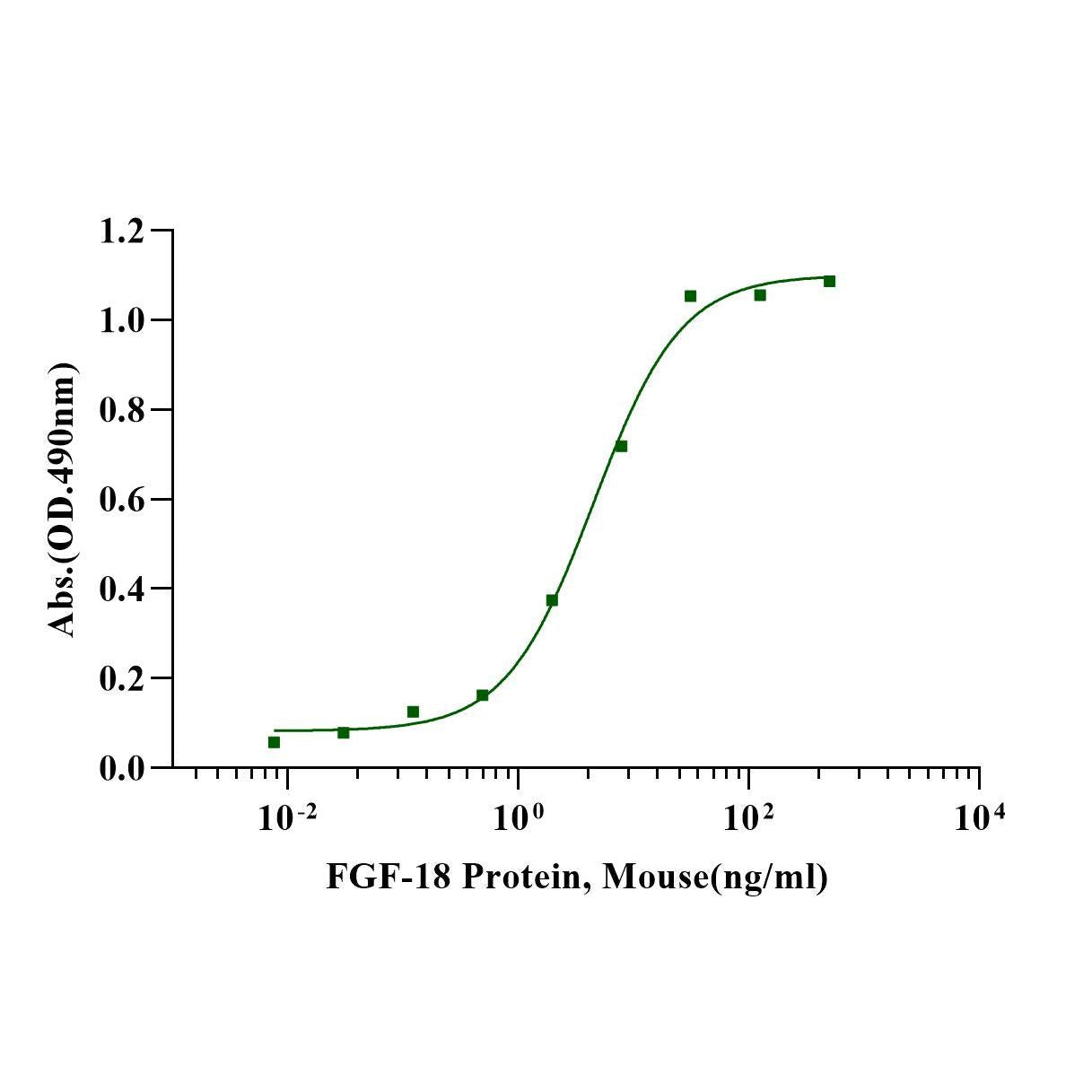Measured in a cell proliferation assay using Balb/c3T3 mouse embryonic fibroblast cells. The EC50 this effect is less than 6ng/ml in the presence of 10μg/ml heparin.
Product Details
Product Details
Product Specification
| Species | Mouse |
| Synonyms | FGF18; FGF-18; fibroblast growth factor 18; zFGF5 |
| Accession | O89101 |
| Amino Acid Sequence | Glu28-Gly207 |
| Expression System | E.coli |
| Molecular Weight | 21 kDa (Reducing) |
| Purity | >95% by SDS-PAGE and HPLC. |
| Endotoxin | <0.1EU/μg |
| Conjugation | Unconjugated |
| Tag | No Tag |
| Physical Appearance | Lyophilized Powder |
| Storage Buffer | 1×PBS, pH7.4 |
| Reconstitution | Reconstitute at 0.1-1 mg/ml according to the size in ultrapure water after rapid centrifugation. |
| Stability & Storage | · 12 months from date of receipt, lyophilized powder stored at -20 to -80℃. · 3 months, -20 to -80℃ under sterile conditions after reconstitution. · 1 week, 2 to 8℃ under sterile conditions after reconstitution. · Please avoid repeated freeze-thaw cycles. |
| Reference | Davidson D. et al. (2005) Fibroblast growth factor (FGF) 18 signals through FGF receptor 3 to promote chondrogenesis. J Biol Chem. 280(21): 20509-15. |
Background
Fibroblast Growth Factor 18 (FGF-18) plays an important role in skeletal development and bone homeostasis. Mature human FGF-18 shares 99% amino acid sequence identity with mouse and rat FGF-18. It is expressed in embryonic somites and the neural fold, adult lung, cerebellar and hippocampal neurons, hair follicle root sheath cells, and osteogenic mesenchymal cells. FGF-18 is a heparin-binding growth factor that belongs to the FGF family. Proteins of this family play a central role during prenatal development, postnatal growth and regeneration of a variety of tissues, by promoting cellular proliferation and differentiation. FGF-18 is required for normal skeletal development. Recombinant Human FGF-18 derived from E.coli is a 20 kDa protein consisting of 173 amino acid residues, resulting from C-terminal truncation of the full length protein.
Picture
Picture
Bioactivity

SDS-PAGE
1μg (R: reducing condition, N: non-reducing condition).
RP-HPLC
>95% as determined by RP-HPLC.


